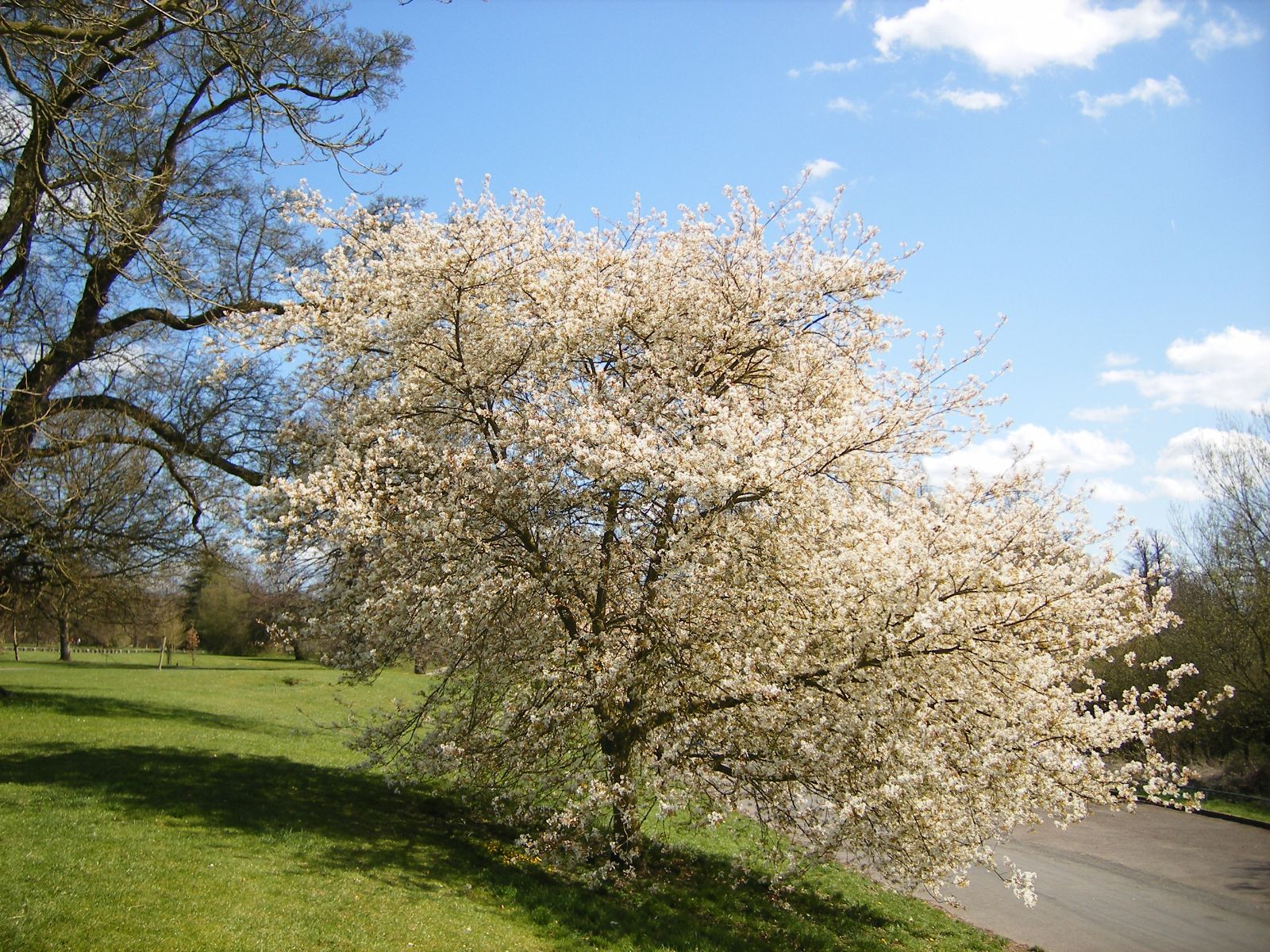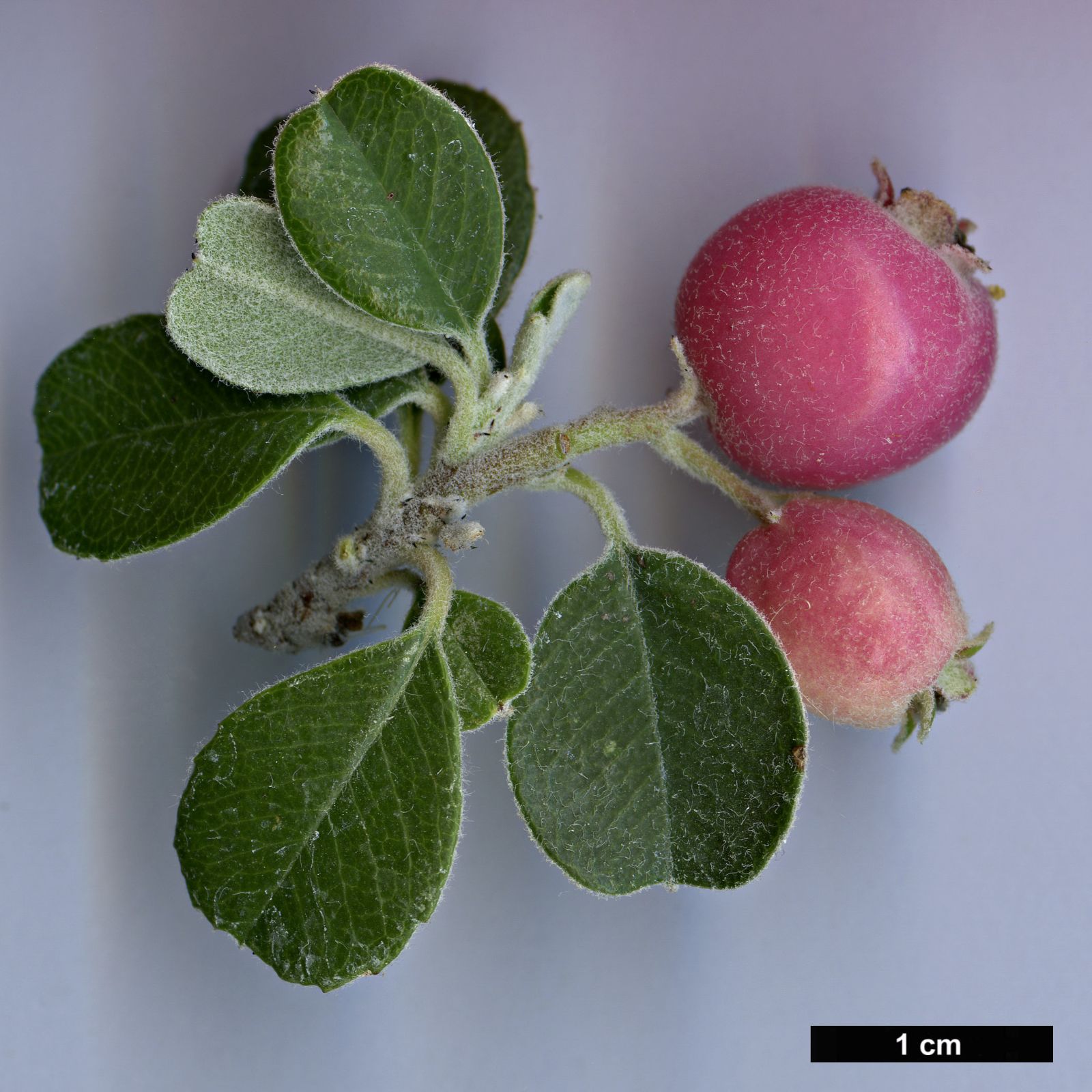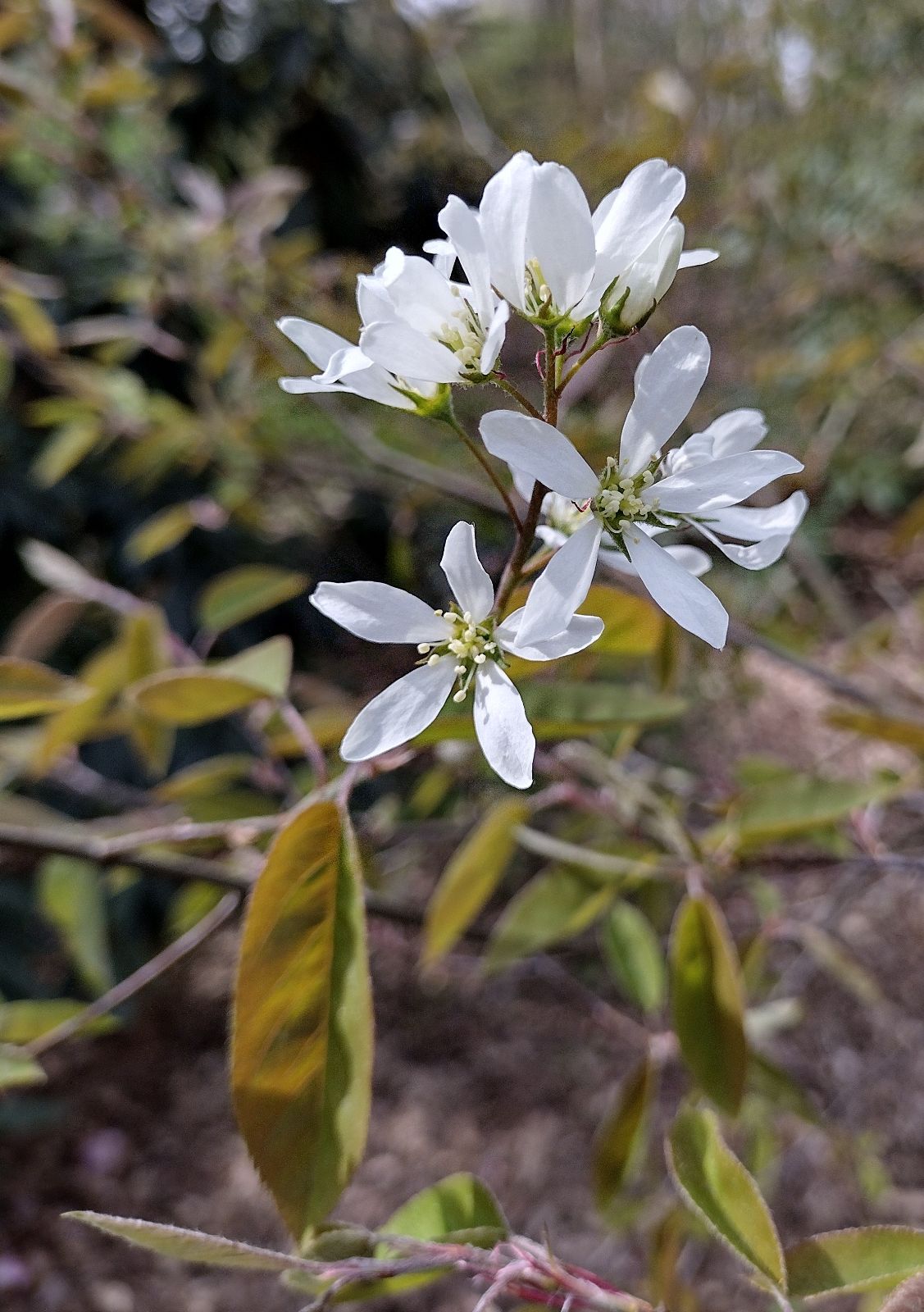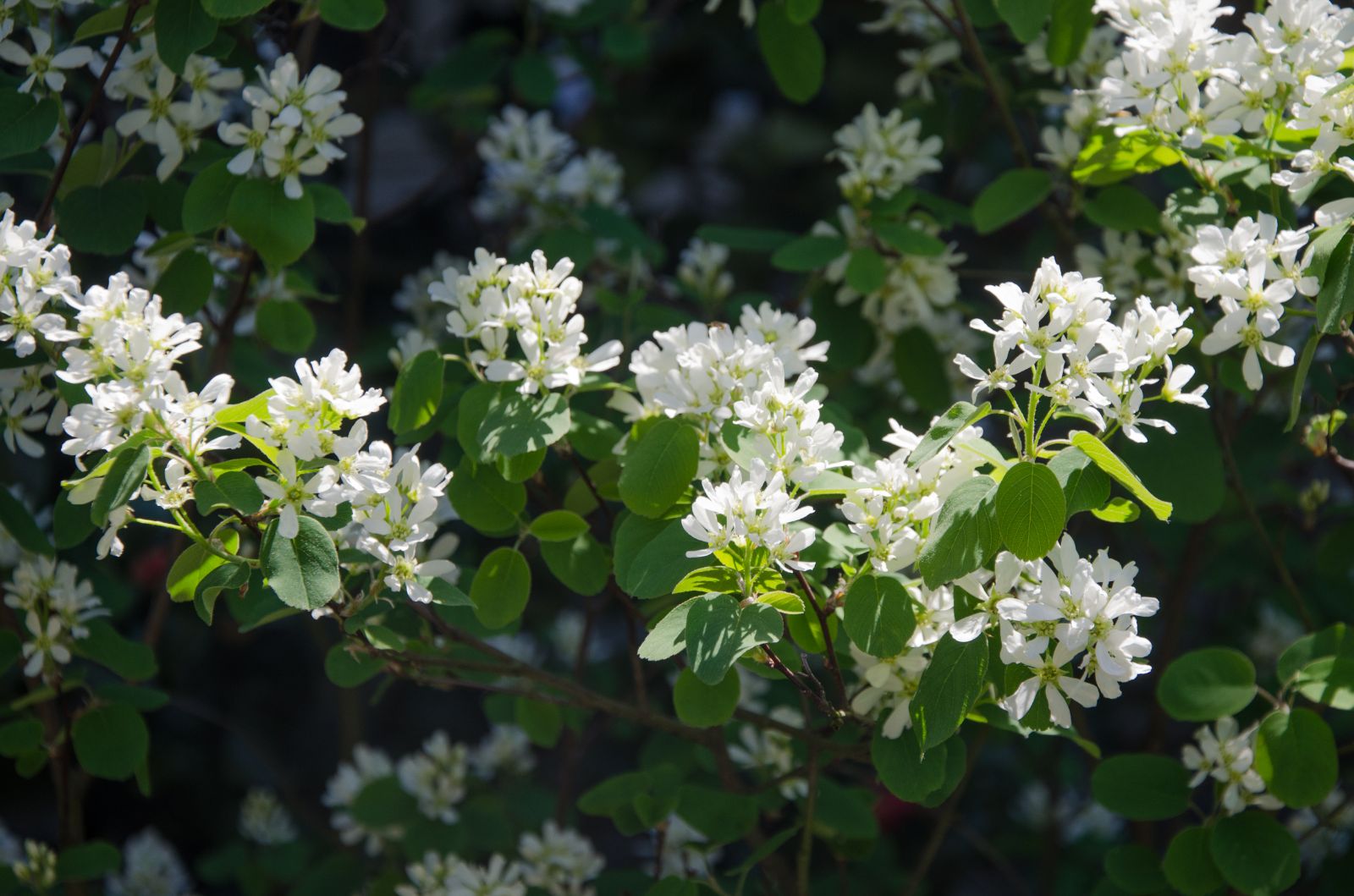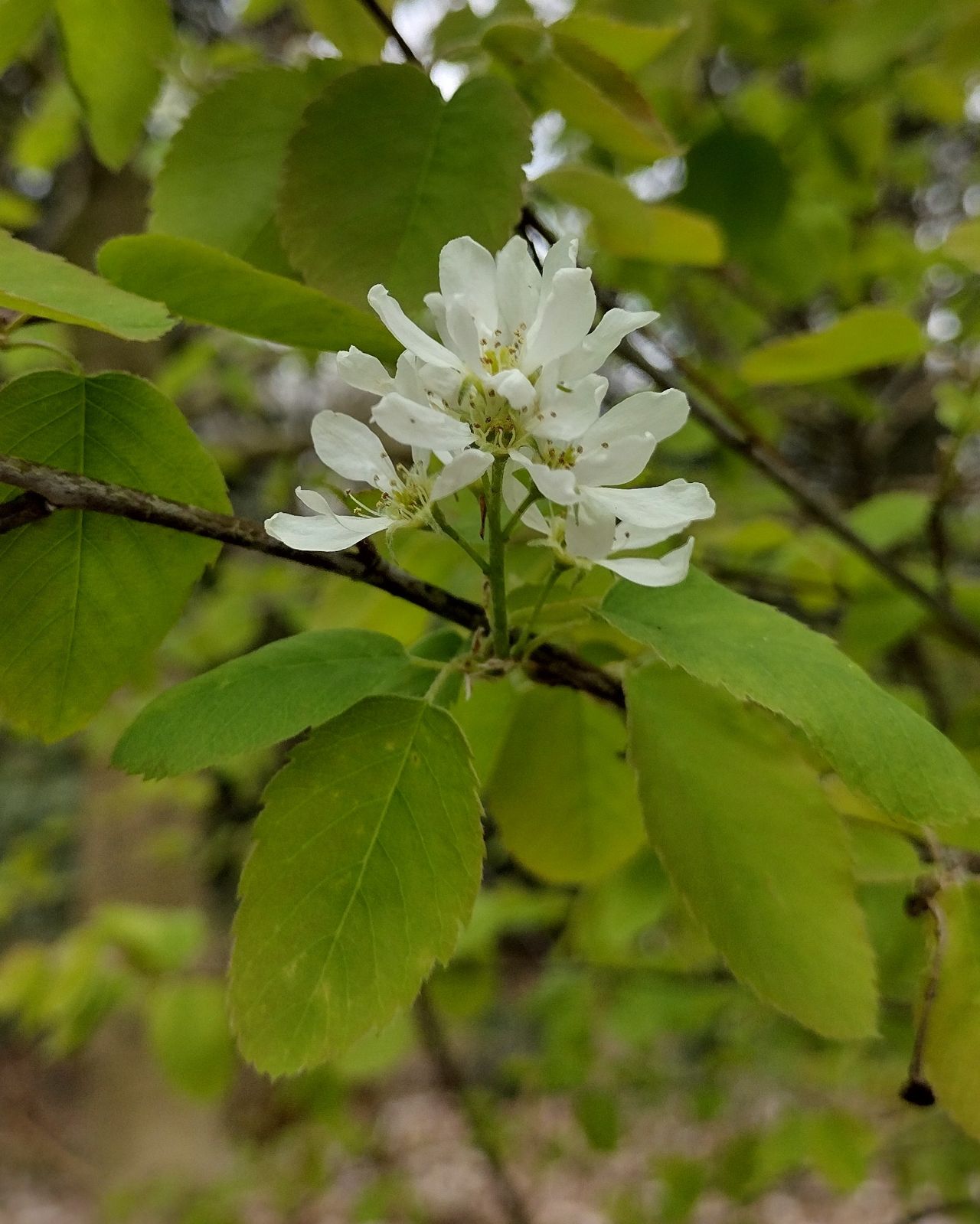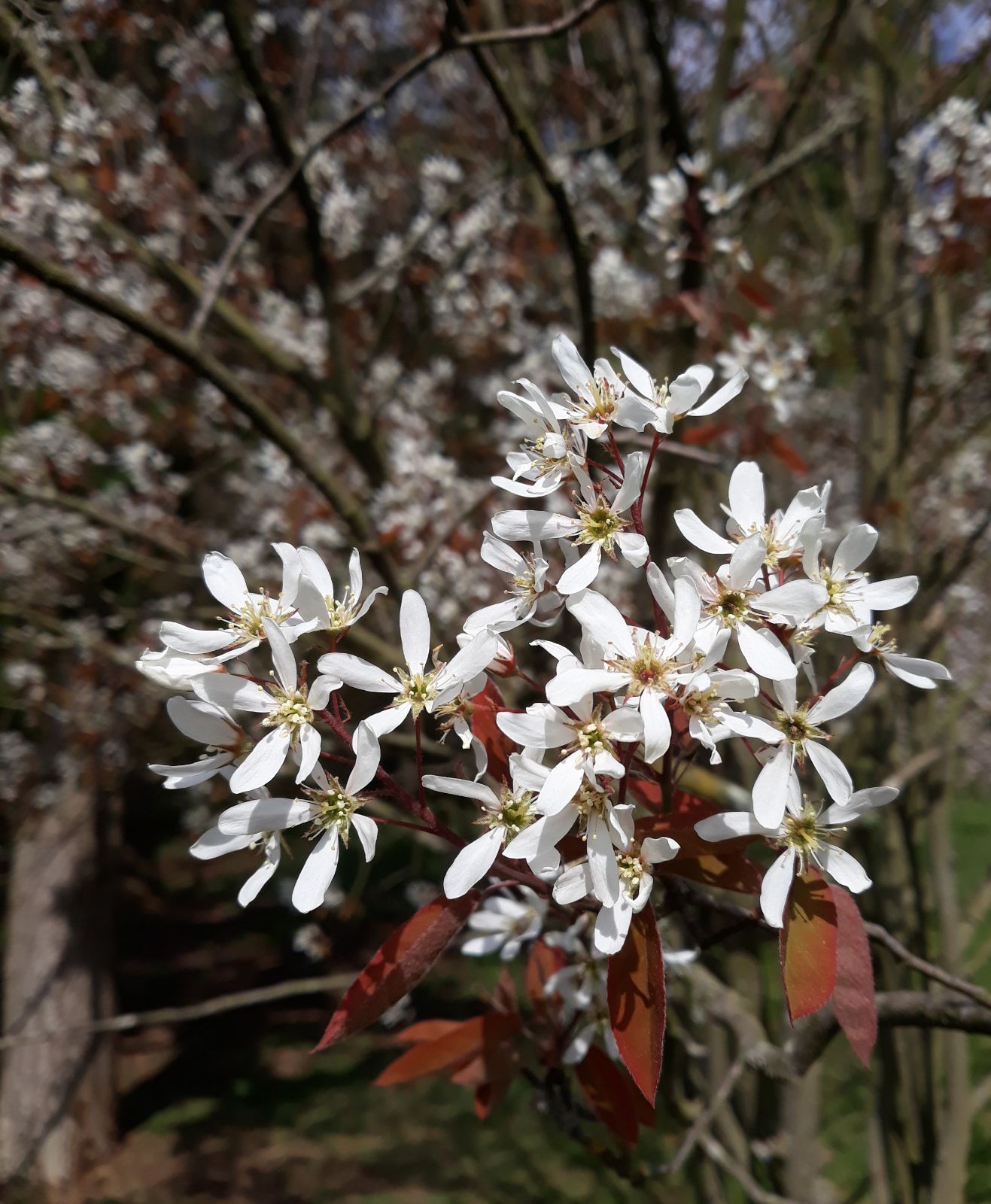Amelanchier
Credits
Article from Bean's Trees and Shrubs Hardy in the British Isles
Recommended citation
'Amelanchier' from the website Trees and Shrubs Online (treesandshrubsonline.
Family
- Rosaceae
Common Names
- Serviceberry
Species in genus
A genus of shrubs and small trees found wild in Europe, Asia, and most abundantly in N. America. The name is an adaptation of ‘amelancier’, an old name for A. ovalis in Savoy. The species are all deciduous, and have alternate, simple leaves, white flowers, and small black or purplish fruits, globose or pear-shaped, and containing five or ten seeds. The attractions of the amelanchiers are in the pure whiteness and abundance of the flowers, their graceful form, and in the fine shades of red, and sometimes yellow, the leaves assume before they fall.
Their cultivation is easy, as they will thrive in any soil that is not too dry and poor on the one hand, or water-logged on the other. They may be raised from seed, by layers, or by division. The practice of grafting them on the hawthorn, more common in Britain once than it is now, but still usual on the continent, should be strictly avoided.
Although Amelanchier is a small, compact genus there is considerable difficulty in distinguishing the American kinds, owing to the existence of forms intermediate between, or slightly differing from, the recognised types. The nomenclature, too, is extremely involved. The amelanchiers of N. America have been reviewed by G. N. Jones in American Species of Amelanchier (1946) and this work is largely followed in the present edition.
From the Supplement (Vol.V)
In the second printing of Volume I substantial alterations were made to the text as it appeared in the first printing of 1970, in order to accommodate the newly described A. lamarckii, which is the species of greatest interest for British gardeners. Limitations of space made it impossible to give a full treatment of this amelanchier or to discuss fully the American species with which it has been confused. For the convenience of the reader, a completely new treatment of the genus is given here, which supersedes entirely the text of Amelanchier in both the first (1970) and later printings of the present volume.
A genus of deciduous shrubs and small trees in the temperate regions of the northern hemisphere, with one or two species in east Asia, two or three in Europe and south-west Asia, and an uncertain number in North America, where the genus occurs in its greatest numbers and variety. Eighteen species are recognised by G. N. Jones in his monograph on the amelanchiers in this region (American species of Amelanchier, 1946), but in the estimation of some botanists this number is too high.
Winter-buds pointed, with imbricate scales. Leaves simple, alternate, usually toothed, closely folded along the midrib when emerging (except in A. bartramiana). Flowers in racemes terminating leafy shoots. Petals five, white or creamy white, usually rather narrow in relation to their length. Calyx-tube (hypanthium) more or less campanulate, adnate to the ovary and extending above it, with five pointed sepals. Stamens ten to twenty (rarely fewer), inserted on the rim of the calyx-tube. Styles three to five, usually united for part of their length or even throughout. Fruits dark purple, usually juicy and edible, with up to ten seeds. The generic name derives from ‘amélanchier’, the French name for the European species, though said to have been originally a dialect name for the medlar.
The vernacular name, ‘snowy mespilus’, in use since at least the early part of the 19th century, has been applied both to the European amelanchier and to various American species, but perhaps belongs by established usage to A. lamarckii, which is still so called in some of the districts where it is naturalised. In North America the common names are ‘juneberry’, ‘shad-bush’ and ‘serviceberry’. The first refers to the early ripening of the fruits; the second to the fact that the amelanchiers flower at the time when the shad leaves the Atlantic and goes upriver to spawn. As for the third, the early immigrants from Britain would have known by the name ‘service’ the fruits of Sorbus domestica, S. torminalis and even S. aucuparia, and it was natural to transfer it to those of the amelanchiers.
The amelanchiers are ornamental in flower, especially A. lamarckii and, judging from American accounts, A. × grandiflora. The taller species – A. lamarckii, A. arborea, A. canadensis, A. laevis and A. asiatica – give good autumn colour except when grown in excessive shade. They will thrive in any soil that is not too dry on the one hand, or constantly water-logged on the other. The species most likely to tolerate boggy conditions are A. canadensis and perhaps A. lamarckii. The stoloniferous species can of course be increased by division, but the usual commercial means is by grafting on Sorbus aucuparia or A. lamarckii. Layering is also a possibility. In view of the readiness with which the amelanchiers hybridise, seeds are not a reliable method of propagation unless taken from plants growing in isolation.

